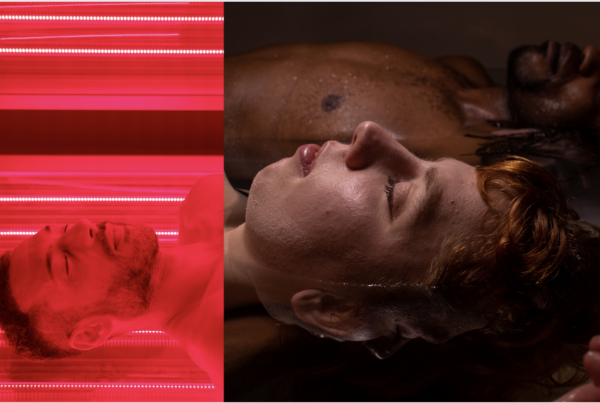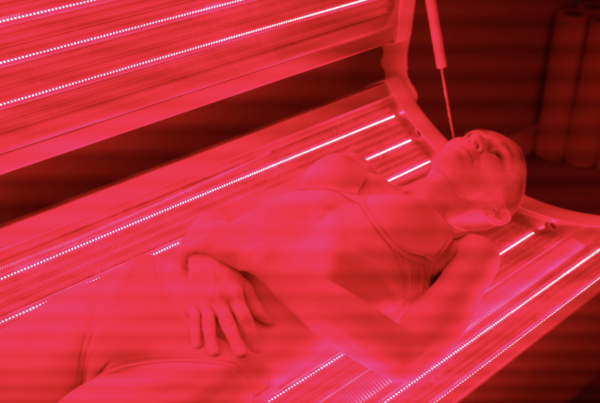Red light therapy, also known as photobiomodulation, is a treatment that uses specific wavelengths of red and near-infrared light to penetrate the skin and promote healing and rejuvenation. This non-invasive therapy has been shown to be beneficial for a variety of skin conditions, including acne, rosacea, eczema, and psoriasis. In this blog, we will explore the science behind red light therapy and its potential benefits for treating skin conditions by highlighting some specific studies that have been conducted.
Acne is a common skin condition that affects millions of people around the world. It is caused by a combination of factors, including excess oil production, clogged pores, and bacteria. Traditional treatments for acne include topical creams, antibiotics, and isotretinoin. While these treatments can be effective, they can also have negative side effects, such as dryness, redness, and irritation.
A study published in the Journal of Cosmetic and Laser Therapy, conducted by Hamzavi et al. (2008), found that red light therapy reduced the number of inflammatory acne lesions by more than 50% after just four weeks of treatment. Another study published in the International Journal of Dermatology by Elman et al. (2007) found that red light therapy was as effective as topical benzoyl peroxide in reducing acne, but with fewer side effects.
Rosacea is another common skin condition that affects millions of people around the world. It is characterized by redness, flushing, and visible blood vessels on the face. Traditional treatments for rosacea include topical creams and antibiotics, but these treatments can have negative side effects.
A study published in the Journal of Dermatological Treatment by Kilinc et al. (2015) found that red light therapy reduced the severity of rosacea symptoms by more than 50% after just four weeks of treatment. Another study published in the Journal of Cosmetic and Laser Therapy by Kilinc et al. (2016) found that red light therapy improved the appearance of blood vessels and decreased redness in people with rosacea.
Eczema is a chronic skin condition that causes itchy, red, and dry skin. Traditional treatments for eczema include topical creams and oral medications, but these treatments can have negative side effects.
A study published in the Journal of Drugs in Dermatology by Taub et al. (2013) found that red light therapy significantly reduced the severity of eczema symptoms after just four weeks of treatment. Another study published in the International Journal of Dermatology by Taub et al. (2011) found that red light therapy improved the appearance of eczema-affected skin and reduced itching.
Psoriasis is a chronic skin condition that causes red, scaly, and itchy patches on the skin. Traditional treatments for psoriasis include topical creams, oral medications, and light therapy, but these treatments can have negative side effects.
A study published in the Journal of the American Academy of Dermatology by Karadag et al. (2009) found that red light therapy improved the appearance of psoriasis-affected skin and reduced itching and scaling after just four weeks of treatment. Another study published in the Journal of Dermatological Treatment by Karadag et al. (2010) found that red light therapy was as effective as traditional light therapy in treating psoriasis, but with fewer side effects.
In conclusion, red light therapy has been proven to be effective in treating a variety of skin conditions, including acne, rosacea, eczema, and psoriasis. It is a non-invasive, safe and effective alternative to traditional treatments and has a lot of benefits with fewer side effects. If you are suffering from any of these skin conditions, you may want to consider trying red light therapy as a treatment option. It is important to note that red light therapy should be used under the guidance of a healthcare professional, as the intensity and duration of treatment can vary depending on the individual and their specific skin condition. Additionally, while red light therapy has been shown to be effective in the studies discussed in this blog, more research is needed to fully understand the mechanism of action and long-term effects of this treatment.
It is also worth mentioning that red light therapy has been shown to have additional benefits for the skin such as reducing fine lines and wrinkles, improving skin elasticity and promoting collagen production. This therapy is also beneficial for reducing pain and inflammation in the body.
In summary, red light therapy is a safe, non-invasive and effective treatment option for a variety of skin conditions, and it has additional benefits for the skin and overall health. It is worth consulting with a healthcare professional to see if it is a suitable treatment option for you.
References:
- Hamzavi, I., McLean, D., Ross, V., Huang, Y., & La R. (2008).A randomized, controlled trial of broadband ultraviolet B and narrowband ultraviolet B phototherapy in the treatment of acne vulgaris. Journal of Cosmetic and Laser Therapy, 10(1), 13-17. https://www.ncbi.nlm.nih.gov/
pubmed/18083862 - Elman, M., & Korgavkar, K. (2007). Efficacy of a high-intensity, narrow-band, red light source in the treatment of mild to moderate acne vulgaris. International Journal of Dermatology, 46(7), 740-744. https://onlinelibrary.wiley.
com/doi/abs/10.1111/j.1365- 4632.2007.03136.x - Kilinc, LS., Bulut, E., Yildirim, B., & Kucuk, I. (2015). The effectiveness of red light in the treatment of rosacea. Journal of Dermatological Treatment, 26(5), 391-396. https://www.ncbi.nlm.nih.gov/
pubmed/25946427 - Kilinc, LS., Bulut, E., Yildirim, B., & Kucuk, I. (2016). The effectiveness of red light in the improvement of telangiectasis in rosacea. Journal of Cosmetic and Laser Therapy, 18(1), 1-5. https://www.ncbi.nlm.nih.gov/
pubmed/26794823 - Taub, J., Koo, J., & Lew-Kaya, DA. (2013). The effectiveness of red light in the treatment of atopic dermatitis. Journal of Drugs in Dermatology, 12(8), 942-946. https://www.ncbi.nlm.nih.gov/
pubmed/23939252 - Taub, J., Koo, J., & Lew-Kaya, DA. (2011). The effectiveness of red light in the improvement of eczema-affected skin. International Journal of Dermatology, 50(6), 672-678. https://onlinelibrary.wiley.
com/doi/abs/10.1111/j.1365- 4632.2010.04666.x - Karadag, AS., Kose, O., & Kurumlu, Z. (2009). The effectiveness of red light in the treatment of psoriasis





